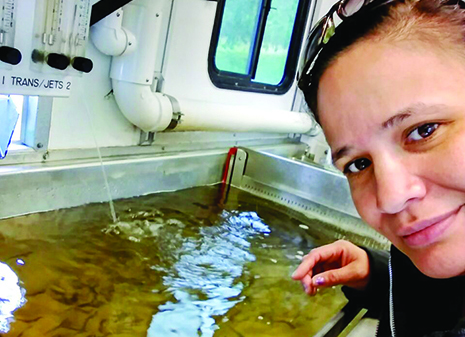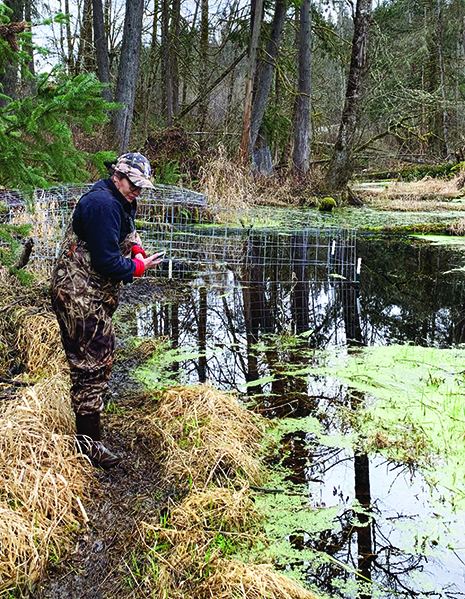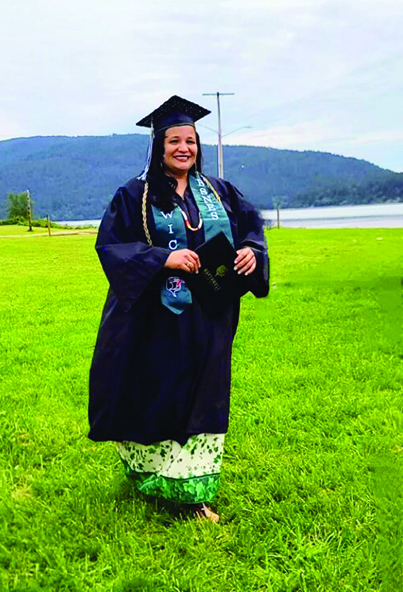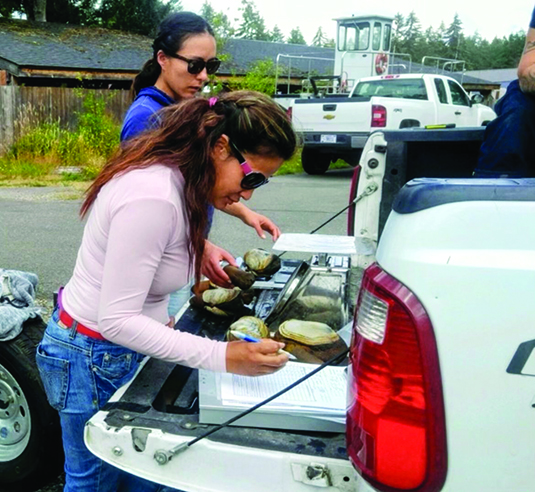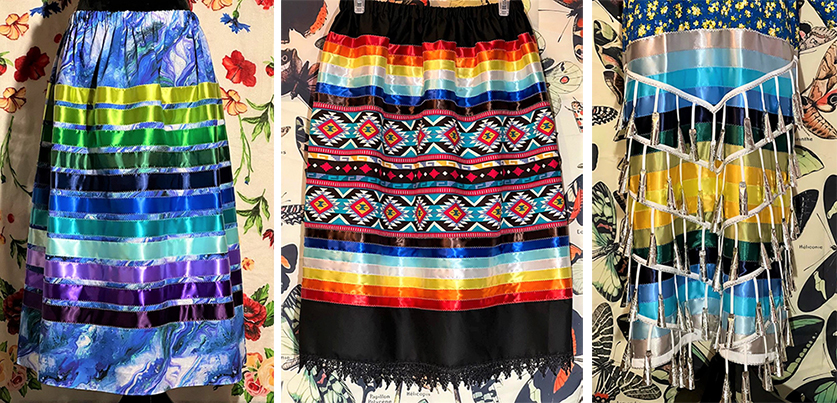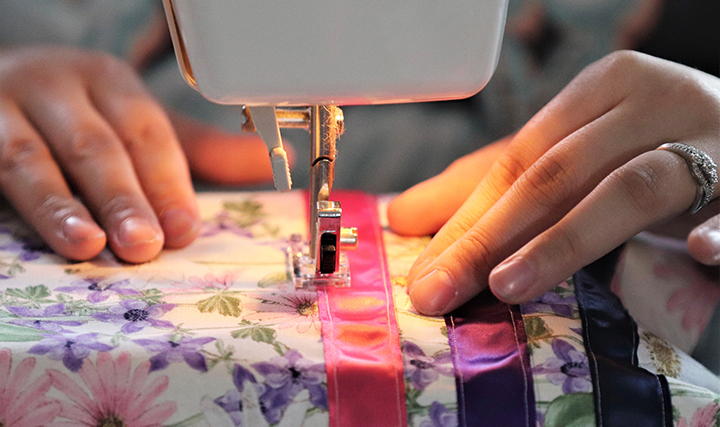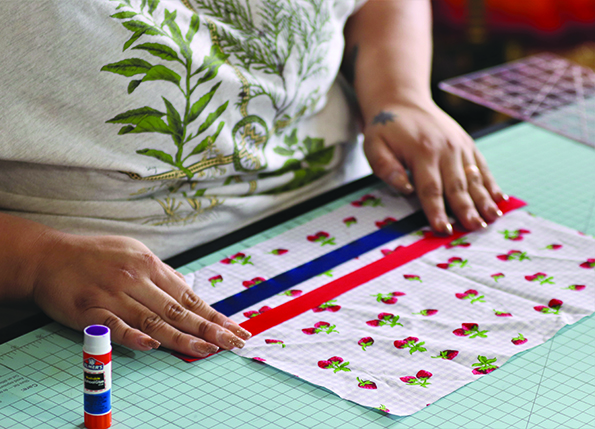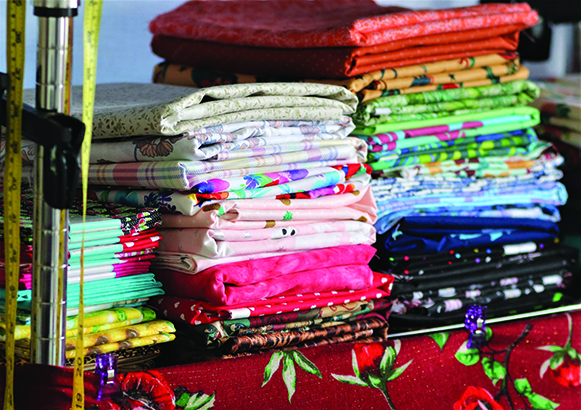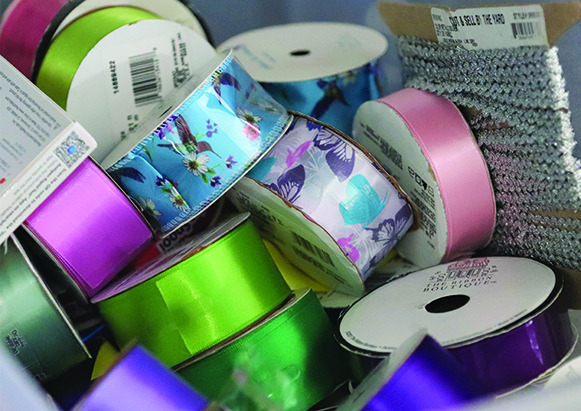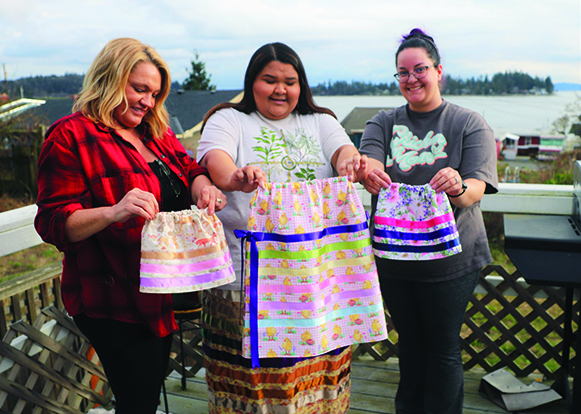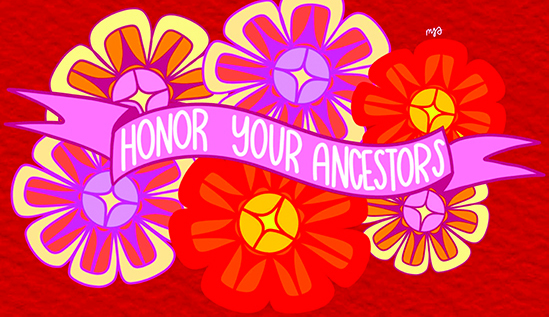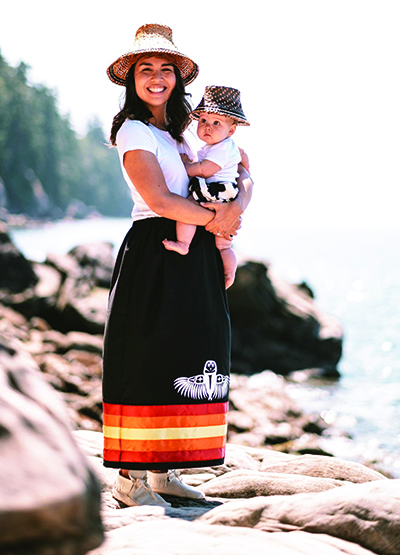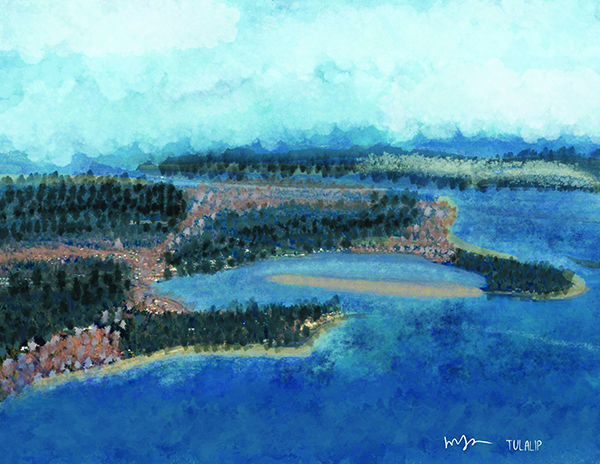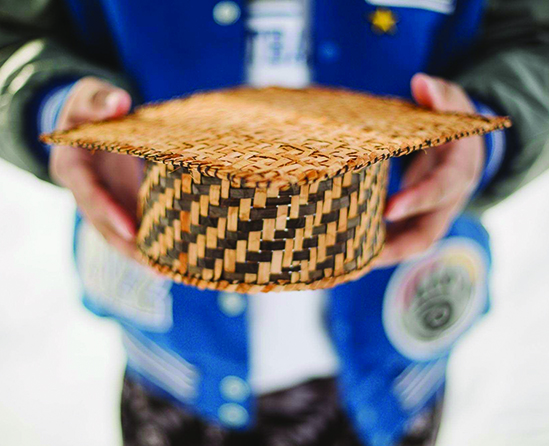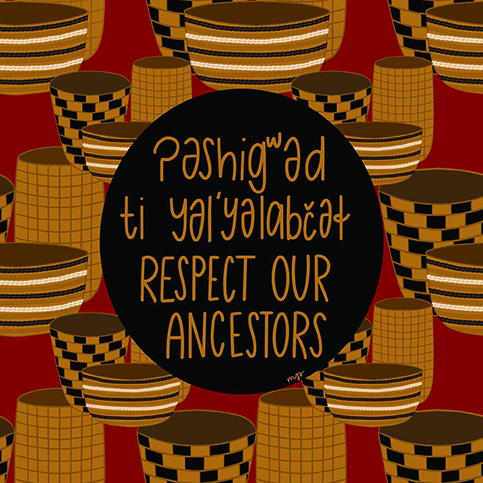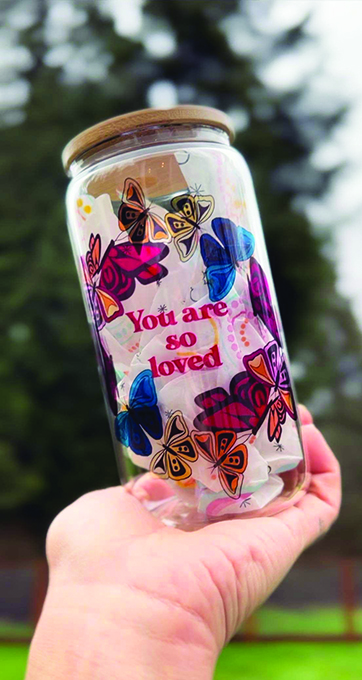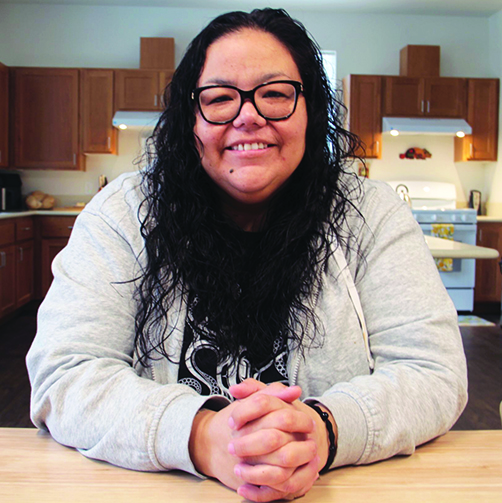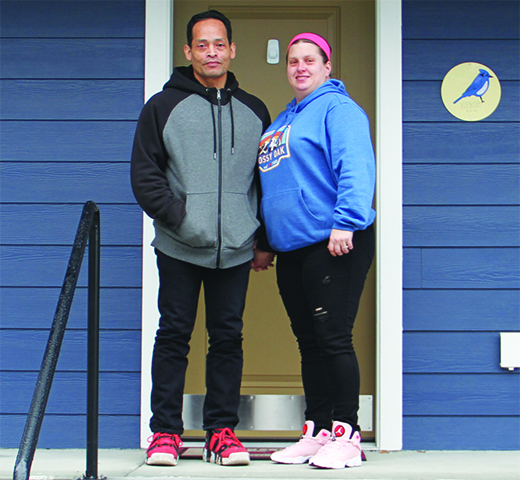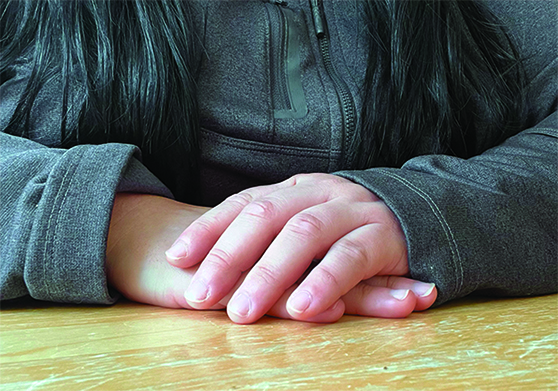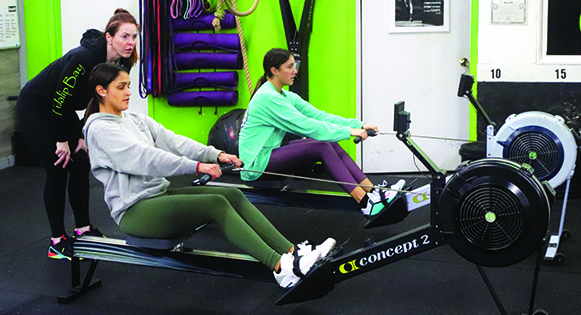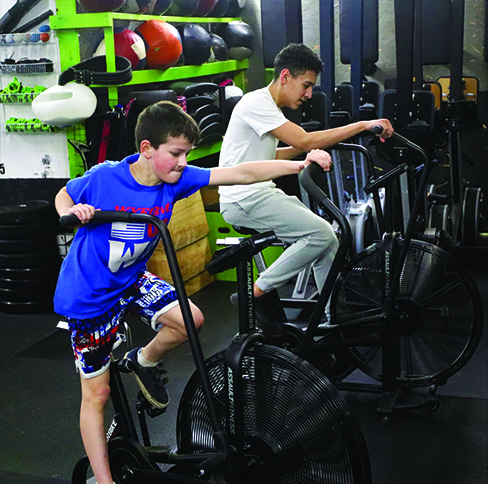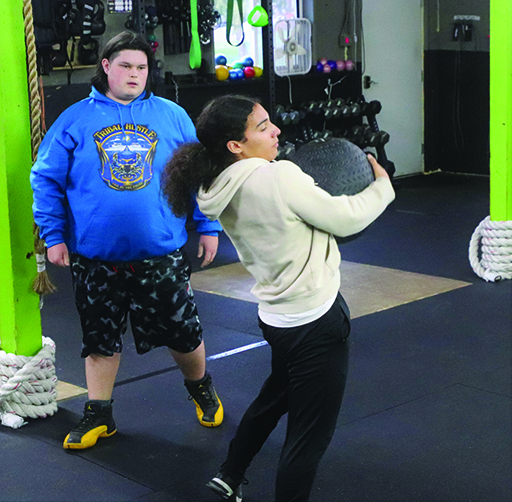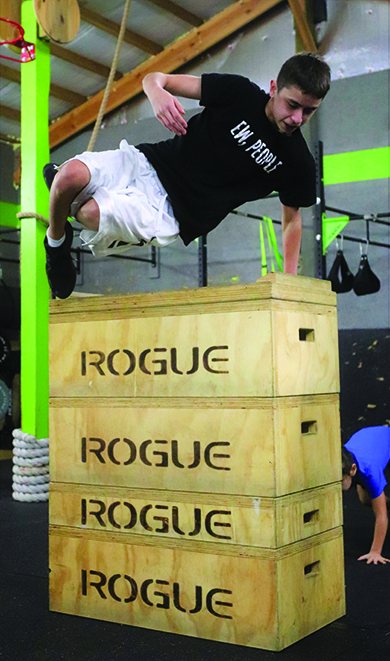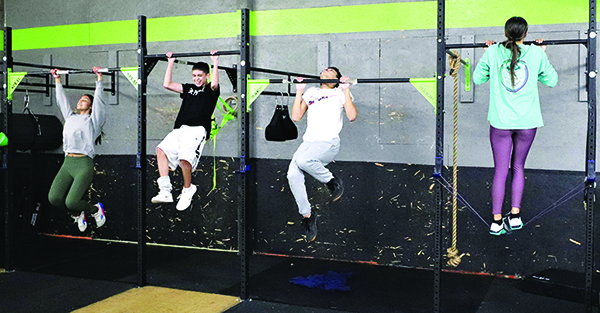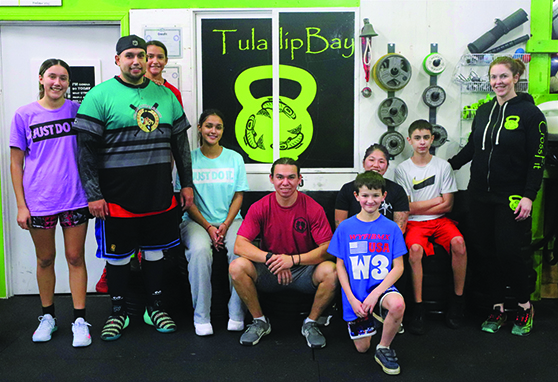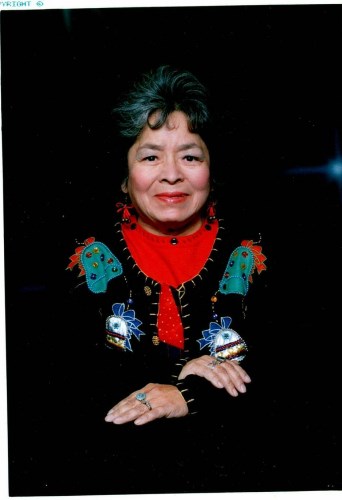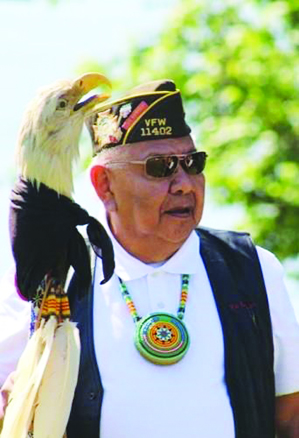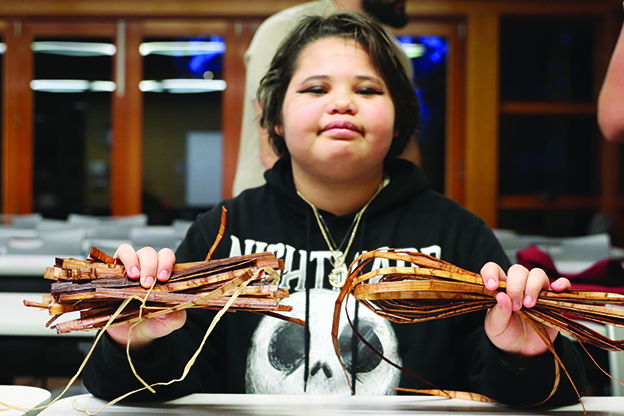
By Kalvin Valdillez, Tulalip News
Nothing quite says summertime for Pacific Northwest tribes more than cedar dugout canoes on the Salish Sea and the return of the king salmon. For as far back as many can recall, the sduhubš people have engaged in cultural activities to celebrate their way of life, immersing into the natural world during the season of sunshine and adventure.
Notably, a time for harvesting traditional foods, plants, and medicine such as huckleberries, cedar, salmon, and shellfish, summer is filled with an abundance of teachings that are important to the tribal nation of Tulalip. The act of exercising their inherent treaty rights and gathering these items is a significant aspect of their culture. And it is frequently celebrated on the reservation during the summer at a number of events including the yearly clambake known as Spee-Bi-Dah and of course, the Salmon Ceremony.
Revived nearly 50 years ago, Salmon Ceremony pays homage to the king salmon for providing nourishment for the tribal community. The ceremony also provides an opportunity for the Tribe to bless the local fisherman who are ready to begin a new season out on the water. During this cultural experience, the people don their beautiful regalia of shawls, vests, ribbon skirts, cedar headbands, and beaded jewelry, and they share traditional songs and stories all in tribute to the king salmon.
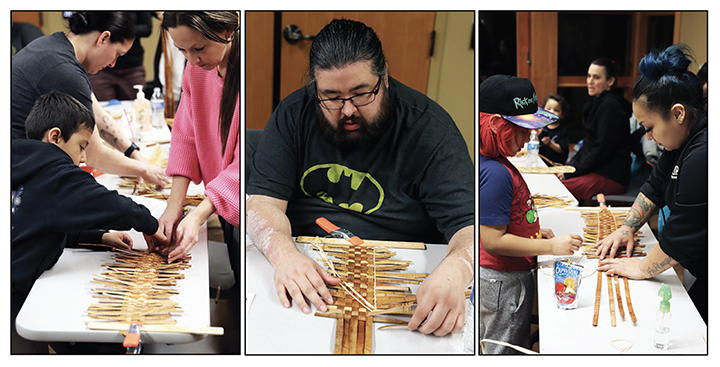
Canoe Journey is another major cultural event that takes place in the late summer months, and it is a beloved gathering celebrated by numerous coastal tribes and first nation bands. For over three decades, tribal families have navigated the local waterways, traveling to handful of reservations before reaching the hosting tribe’s village. The final destination changes annually, as the tribes take turns hosting the event. This year’s paddle ends at Muckleshoot, where a weeklong protocol will ensue, and each tribe and band will offer their traditional family songs and dances to commemorate another successful Canoe Journey.
Equally as important as the teachings that take place at these summertime events is the preparation for those gatherings. In anticipation of this year’s Salmon Ceremony and the 2023 Canoe Journey, Tulalip tribal members of all ages joined together for the Tribe’s first Cultural Night of the year on the evening of March 7. Numerous families attended Cultural Night where they received a shawl kit and bundles of cedar to craft their own regalia.
During Cultural Night, Tribal member, Melissa Gobin was on hand to assist the people with their projects. She stated, “We’re trying to get more people involved in Salmon Ceremony and Canoe Journey and ensure that they have regalia to dance. We’re also trying to get more elders to volunteer to talk to the little ones, and help the people understand the importance of why we come together in this way as a community. It really makes me happy to see everybody working on their projects. And, you know when you make your own regalia, it makes you that much more proud when you’re wearing it.”
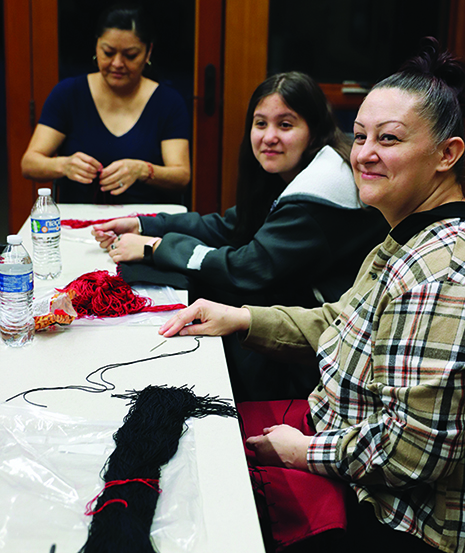
She continued, “Tonight, we’re doing shawls, headbands, and cedar belts. So, we’re trying to incorporate as much of our traditional teachings as we can for the regalia. We’re also going to be doing some ribbon skirts in the future, and vests for the men.”
Occupying all three classrooms of the Hibulb Cultural Center, there were close to seventy-five people in attendance. In fact, there were so many participants at the gathering that the Tribe is considering bigger venues to host the remaining eighteen Cultural Nights this year. It was beautiful to see Tulalip’s ancestral teachings passed down to the younger generations in real-time. Many families attended the event together and were happy to share time and conversation while working on their traditional attire.
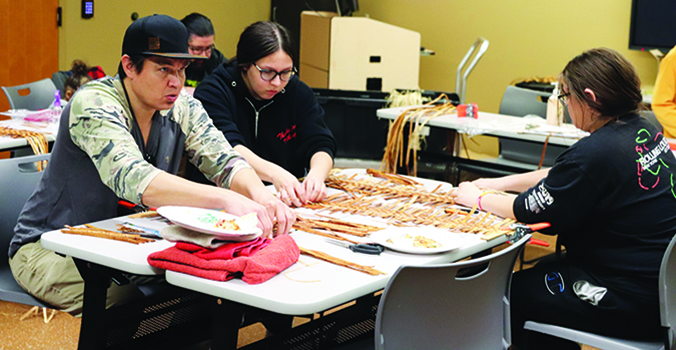
“I have a daughter who was born in 2020, so I really want her to be able to access community in a way we haven’t since she was born,” shared Shayleigh Tucker. “I am making my shawl and we’re waiting for the baby sized shawls, so we can make one for my daughter as well. My sister is working on her shawl, and she’s going to grab some cedar and start cedar belts.”
Everywhere you looked, it was bright smiles and plenty of laughter as the community caught up with each other during the two-hour event. Tulalip pride was on full display as many of the participants shared their excitement to wear their handmade regalia at both the Salmon Ceremony and also along the Canoe Journey’s Paddle to Muckleshoot. Newcomers quickly picked up on the techniques of weaving and sewing, and are already eager to learn more and take on new projects.
Said Melissa, “Seeing my nieces, my friends and new faces, and seeing a dad who brought his daughter out to make a shawl, makes me so happy. I think that in this new generation, some of them don’t even know what a shawl is, and so we’re bringing the teachings to them. And we’re telling them that we are going to teach you these things so that you know what to do when we’re having our ceremonies and what it means to be Tulalip.”
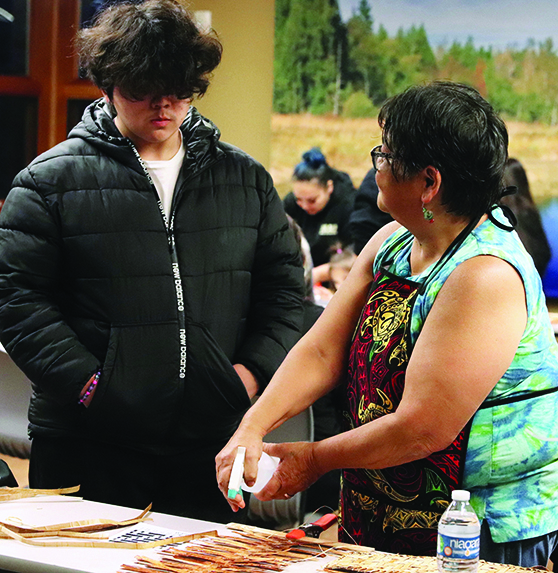
Cultural Nights are planned for every Tuesday, from 5:30 p.m. to 7:30 p.m., leading up to the Canoe Journey this July. The Cultural Night gatherings are also exclusive to Tulalip tribal members. And make sure to keep an eye out for a location change as more people confirmed on Facebook that they will be attending Cultural Nights in the upcoming weeks.
While working on a cedar belt, which she plans to gift upon completion, Tulalip Youth Council Vice-Chair, Faith Valencia, expressed, “It’s important to keep the culture alive so we can pass it on to future generations to keep it going,”
For additional information about Cultural Nights, please contact Malory Simpson at (360) 716-4399.
